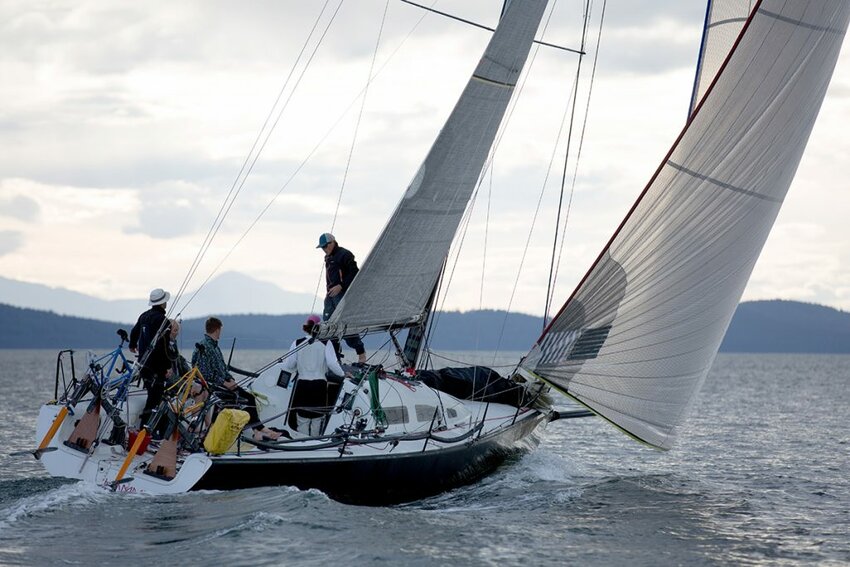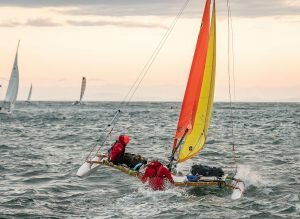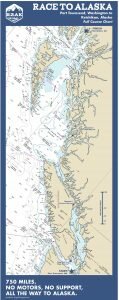 Bicycle-powered propellers power many of the sailboats in R2AK when sails can’t. Photo courtesy of Taylor Bayly/racetoalaska.com.[/caption]
Bicycle-powered propellers power many of the sailboats in R2AK when sails can’t. Photo courtesy of Taylor Bayly/racetoalaska.com.[/caption] What kind of boat race makes you leave your engine back home, is tougher than the Iditarod and warns you about the dangers of bear attacks? The Race to Alaska, or R2AK, of course. Back for its sixth running, this year’s R2AK starting gun will go bang at 5 a.m. on Monday, June 8 in Port Townsend, and with a little luck and guts, finishers will end up 750 miles away in Ketchikan sometime the same month.
 Any vessel is welcome at the Race to Alaska, as long as it’s motorless. Charley Starr/racetoalaska.com[/caption]
Any vessel is welcome at the Race to Alaska, as long as it’s motorless. Charley Starr/racetoalaska.com[/caption] Why so long? It all depends on what you’re driving. A fast sailboat could make it in a week like Team Angry Beaver did last year while Backwards AF took a tad over 17 days to row across the finish line coming in 23rd and beating two sailboats. The last one to cross the line was Team Wee Free Men who docked two days later. Of course, this doesn’t include the 10 other boats who failed to finish at all. It must have something to do with the team names – what would you expect from Wingnuts, Three Legged Cat, You Either Do Stuff or You Don’t and Funky Dory?
The race has two stages. Racers have to first travel 40 miles across the notoriously bumpy Juan de Fuca Strait to Victoria in 36 hours or less. Last year, Backwards AF reported 3-6 feet chop as they rowed across from Dungeness Spit on the Olympic Peninsula. Lots of teams only participate in the first leg due to lack of time or desire to go the whole distance. These might be considered the sanest of the bunch depending on your viewpoint. Regardless, racers have to make it to Victoria before the deadline to avoid disqualification.

How does someone sign up for this race? First off, you need something that floats. It can be powered by the wind, by oars or by pedal but it cannot be driven by a motor of any kind. You should know something about navigation, first aid, be able to row/paddle/sail for long periods of time, know how to use a radio, avoid collisions and have the necessary skills to repair your boat if needed. Oh, and did we mention, you should be nuts? You should be. Seriously so. No question about it.
You can sign up online at r2ak.com before April 15. There’s plenty of information about what’s required as well as links to important resources such as how to avoid being attacked by bears and other significant dangers. Both your team and your vessel will be assessed for fitness which sounds daunting but, really, how tough can it be? Kayakers and SUP boarders have done this race. Not too many, but still …
Do you have what it takes? Do you have friends who have what it takes? If so, all aboard!
The Northwest Maritime Center in Port Townsend is Race to Alaska’s home base. The mission of the Northwest Maritime Center is to engage and educate people of all generations in traditional and contemporary maritime life, in a spirit of adventure and discovery. For more info: nwmaritime.org.